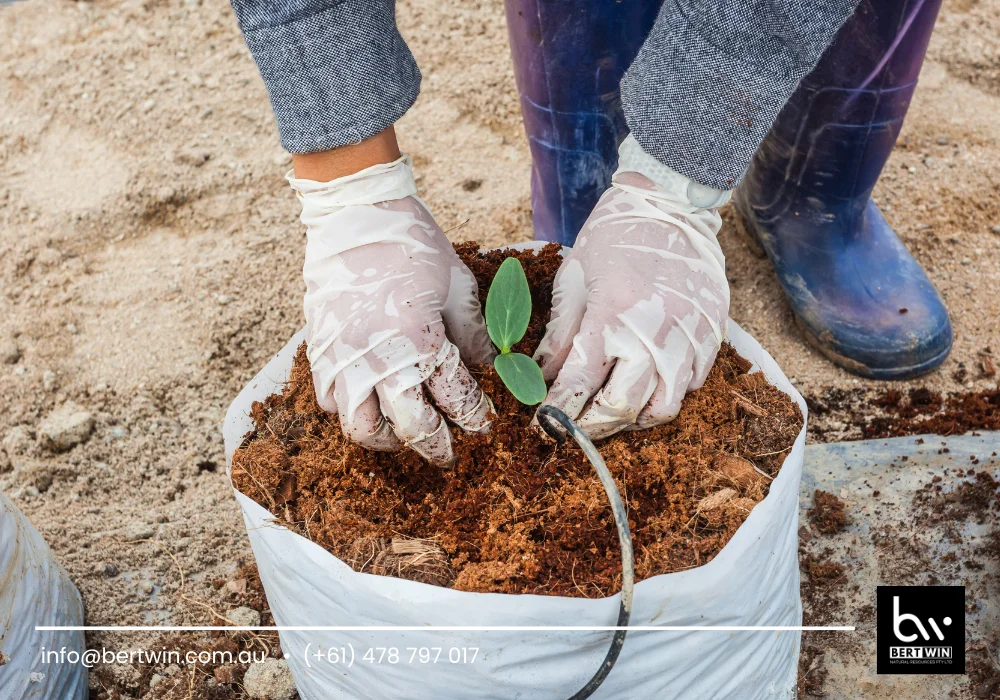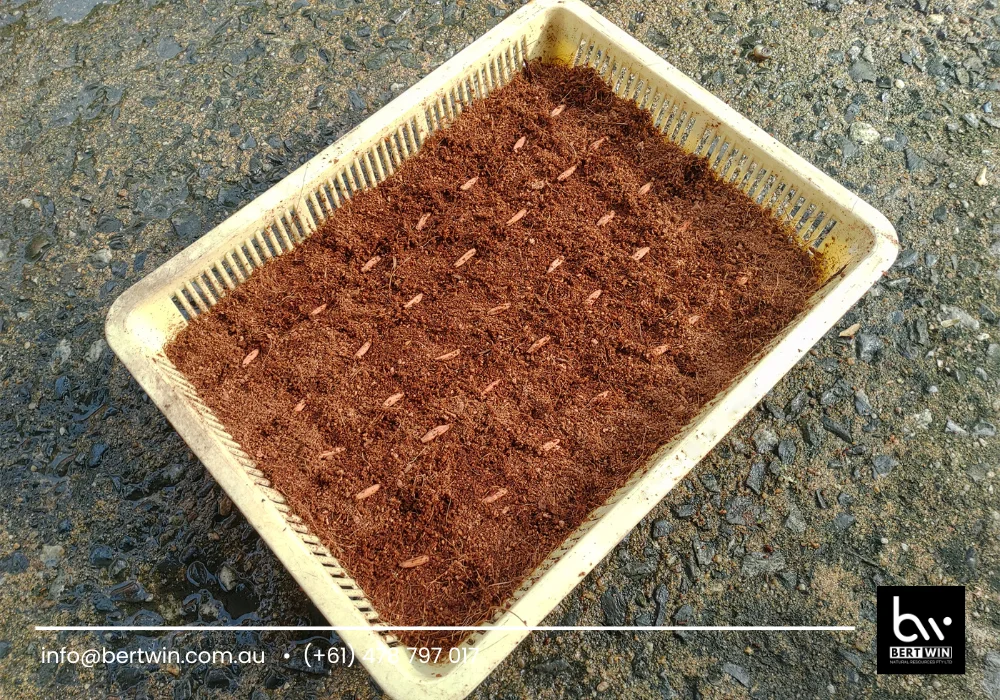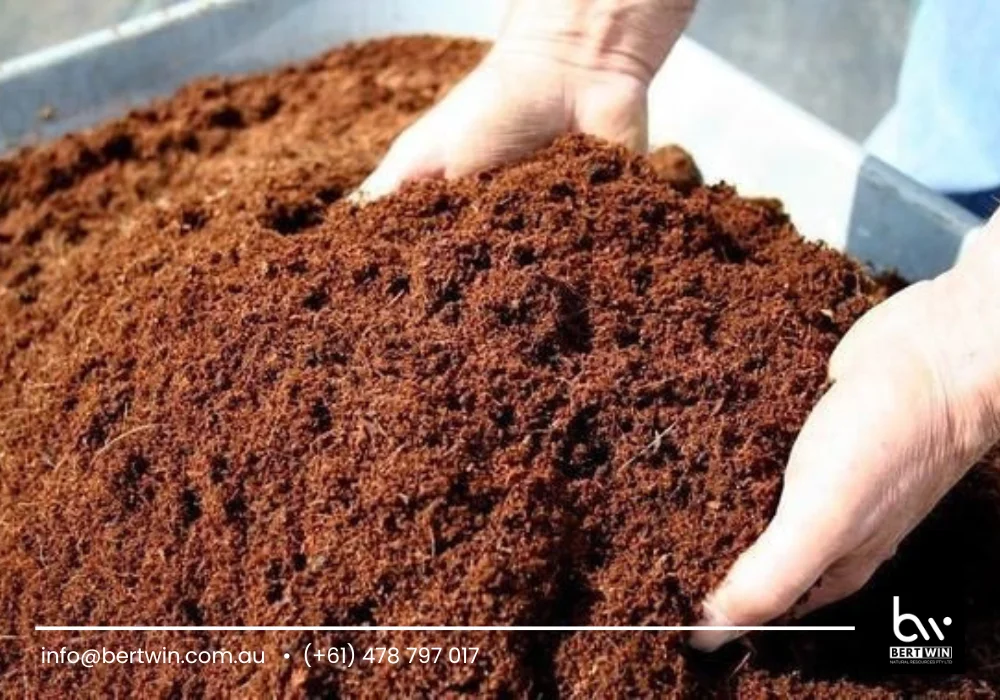Coco peat used for various applications is becoming increasingly popular in Australia due to its environmental benefits and versatility. Coco peat, also known as coir pith, is a natural byproduct derived from coconut husks. This sustainable material has gained widespread recognition in agricultural, horticultural, and environmental sectors for its ability to improve soil quality and enhance plant growth. In this article, we will explore the different uses of coco peat in Australia and how it contributes to more sustainable practices across various industries.

What is Coco Peat?
Coco peat is made from the fibrous material found between the hard shell and the seed of a coconut. After processing, the fibers are removed, and the leftover pith is collected, compacted, and packaged as coco peat. This material is lightweight, highly absorbent, and rich in nutrients, making it an ideal substitute for peat moss and other synthetic soil enhancers.
The versatility of coco peat lies in its ability to retain moisture, improve soil structure, and provide aeration, making it highly beneficial for both commercial and home gardening purposes. The coco peat used for a wide range of applications is especially appreciated for its sustainability, as it is made from a renewable resource and is biodegradable. What is coco peat used for in Australia?
What is coco peat used for in Australia?
1. Soil Amendment in Agriculture
Coco peat is widely used in Australian agriculture as a soil amendment due to its excellent moisture retention capabilities and high organic content. When mixed with existing soil, it improves soil structure by increasing aeration, allowing roots to penetrate more easily and access nutrients.
- Moisture Retention: Coco peat holds water effectively, reducing the need for frequent watering, especially in arid regions of Australia.
- Soil Aeration: It provides better air circulation in the soil, preventing compaction and promoting healthy root growth.
- Sustainability: Unlike peat moss, which is often harvested from non-renewable bogs, coco peat is a byproduct of the coconut industry, making it a more sustainable alternative.
2. Hydroponic Growing Medium
One of the most common uses of coco peat is as a growing medium in hydroponic systems. This soilless farming method is particularly useful in Australia, where water conservation is a priority, and traditional farming methods may not be as feasible in drought-prone areas.
- Water Retention: Coco peat holds water and nutrients for longer periods, providing a stable environment for plants in hydroponic systems.
- pH Neutral: Coco peat is pH-neutral, meaning it does not interfere with the nutrient uptake of plants in hydroponic solutions.
- Reusability: Coco peat can be reused in hydroponics for multiple cycles, reducing waste and making it an efficient and cost-effective option for growers.
3. Potting Mix for Horticulture

In the horticultural industry, coco peat is used extensively as a key ingredient in potting mixes. It is often blended with other materials like perlite, vermiculite, or compost to create a balanced and fertile growing medium for both indoor and outdoor plants.
- Well-Drained Yet Moist: Coco peat provides excellent drainage while still retaining moisture, making it an ideal choice for potting plants, especially in areas like Sydney or Melbourne, where climate conditions vary.
- Lightweight: Being lightweight, coco peat makes handling and transporting potting mixes easier, especially for commercial nurseries and gardeners.
- Root Health: The structure of coco peat allows roots to breathe and prevents root rot, ensuring better plant health.
4. Erosion Control and Soil Stabilization
Coco peat is increasingly being used in erosion control and soil stabilization projects in Australia, particularly in areas prone to soil erosion due to heavy rainfall or strong winds.
- Erosion Mats: When combined with other natural materials like coco mesh, coco peat is used to create erosion control mats. These mats are placed on vulnerable areas to prevent soil loss and provide a stable base for vegetation to grow.
- Land Reclamation: Coco peat is used in land reclamation projects to restore degraded land and provide a fertile medium for plant growth. It helps retain moisture and encourages the establishment of vegetation, thus preventing further erosion.
5. Composting and Waste Management
Coco peat is also used in composting processes due to its ability to absorb moisture and balance the carbon-to-nitrogen ratio. It helps in creating high-quality compost for agricultural and horticultural use.
- Improving Compost Quality: Coco peat helps improve the texture and moisture content of compost, speeding up the decomposition process and producing richer, more fertile compost.
- Waste Reduction: Using coco peat in composting helps recycle organic waste materials, making it a sustainable option for waste management in urban areas.
Benefits of Using Coco Peat

1. Eco-Friendly and Sustainable
Coco peat is an environmentally friendly alternative to peat moss and other synthetic materials. By using coconut husks, which would otherwise be discarded as waste, coco peat helps reduce environmental impact and promotes the use of renewable resources.
2. Improved Plant Growth
Due to its high water retention and aeration properties, coco peat improves the overall health and growth of plants. It supports better root development and ensures that plants receive a steady supply of moisture and nutrients.
3. Cost-Effective
Coco peat is a cost-effective material, especially for large-scale agricultural projects. It is often less expensive than other soil amendments, and its reusability in hydroponics systems and potting mixes makes it an economical choice for both commercial and personal use.
4. Easy to Use and Handle
Unlike other soil amendments that may be heavy or difficult to work with, coco peat is lightweight and easy to handle. This makes it convenient for gardeners, nurseries, and large-scale agricultural operations to incorporate it into their practices.
Conclusion
What is the coco peat used for? The coco peat used for a variety of applications in Australia offers numerous environmental and economic benefits. From improving soil health and supporting hydroponic farming to playing a role in erosion control and composting, coco peat is a valuable resource for sustainable agriculture, horticulture, and environmental management. Its versatility, cost-effectiveness, and eco-friendliness make it an excellent choice for individuals and businesses looking to reduce their environmental footprint while enhancing plant growth.
For further information, you may contact WhatsApp at (+61) 478797017 or via email at info@bertwin.com.au.
